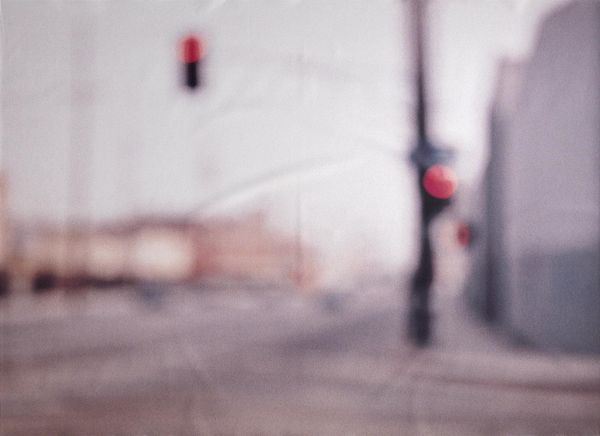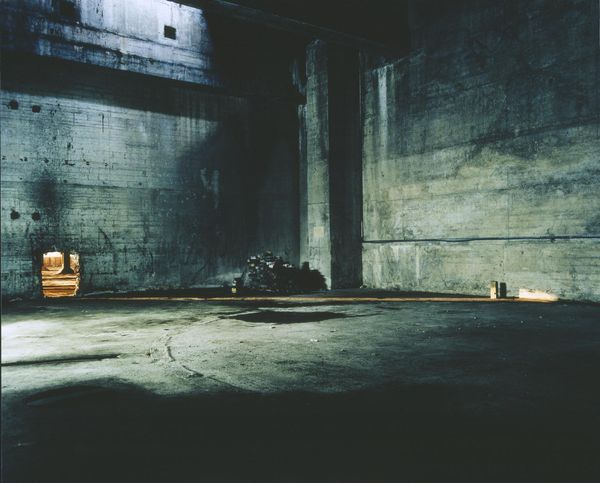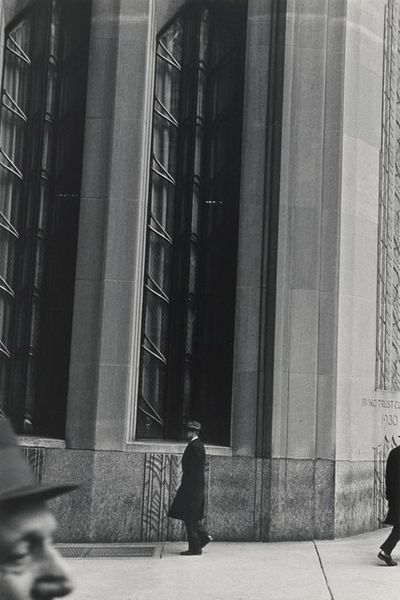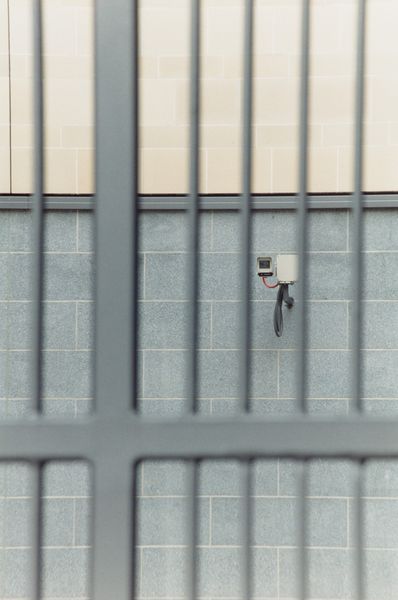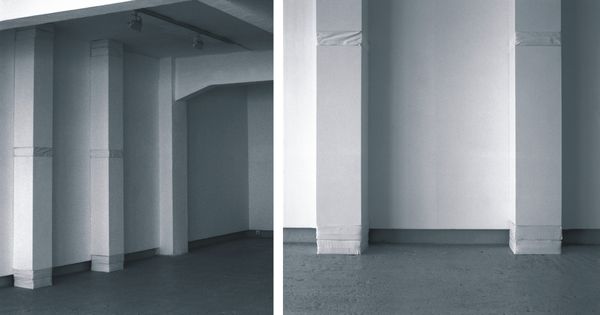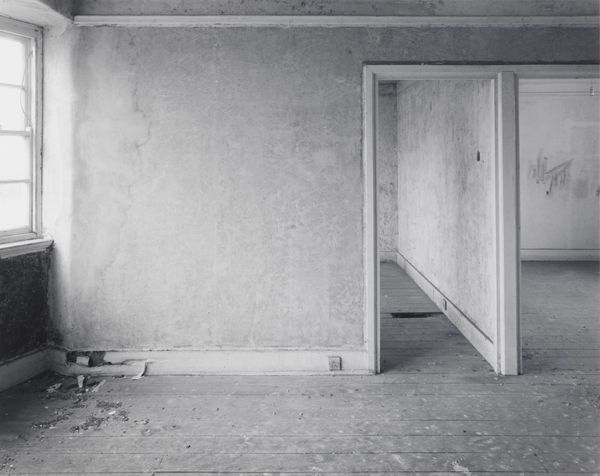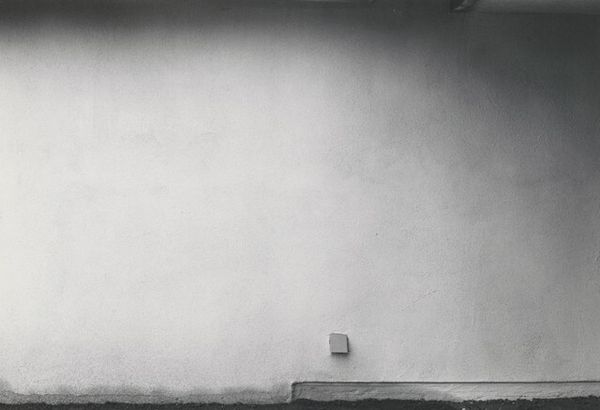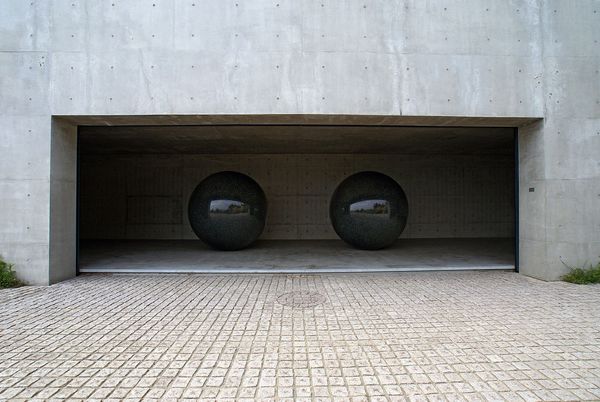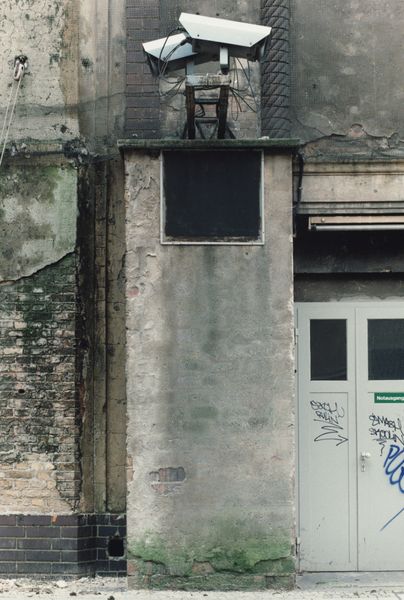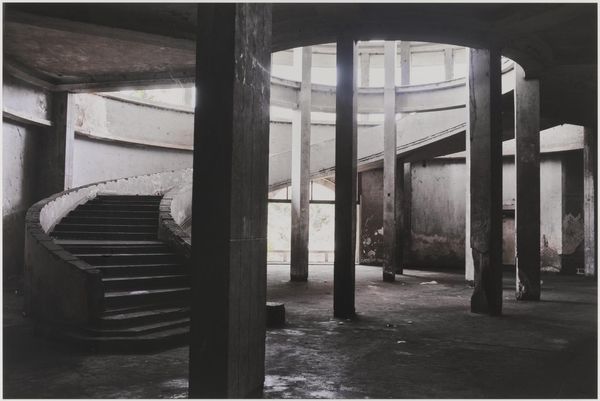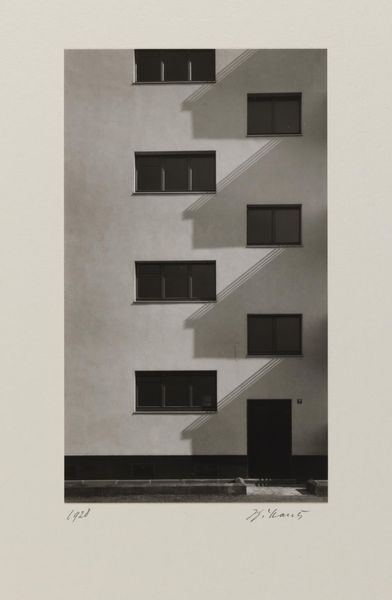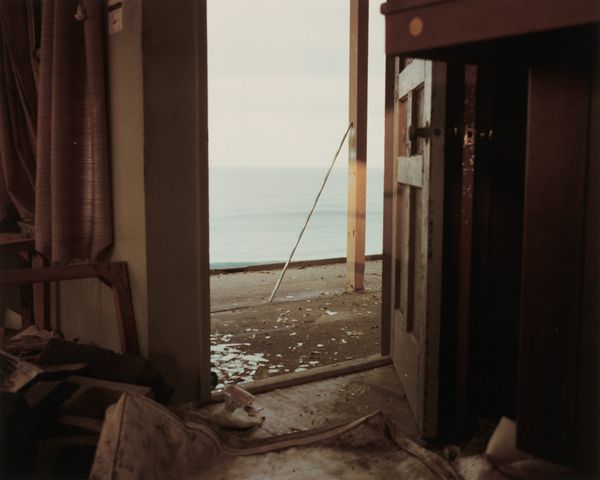
Dimensions: support: 1012 x 1545 mm
Copyright: © Seamus Nicolson | CC-BY-NC-ND 4.0 DEED, Photo: Tate
Curator: Seamus Nicolson’s photograph, “Ori,” captured my attention. It features someone under an overhang, their shadow stretched against a wall, next to air conditioning units. It's a large-scale work, almost one and a half meters wide. Editor: My initial impression is somber, even a bit lonely. The harsh artificial light and geometric patterns create this sense of urban alienation, as if the figure is trapped within the rigid structures of the city. Curator: Absolutely. Nicolson often explores themes of isolation and identity within the urban landscape. The shadow becomes almost a separate entity, perhaps representing a fractured self or the weight of societal expectations. Editor: It also brings up questions of visibility and invisibility. The figure is partially obscured, yet the shadow is prominent. Who gets seen, who gets heard, and what narratives are erased or amplified in these public spaces? Curator: I hadn’t considered it quite that way, but I appreciate your perspective. It reminds me that art often reveals as much about us as it does about the subject. Editor: Precisely. And the beauty is in how it resonates differently for each of us, sparking new understandings.
Comments
Join the conversation
Join millions of artists and users on Artera today and experience the ultimate creative platform.
tate 8 months ago
⋮
Like Jason, also shown here, Ori is a reconstruction of a previously-observed moment, not a documentary record of a real instant in time. Working from an extensive mental catalogue of locations and potential characters, Nicolson poses friends and acquaintances in night-time scenes to make images that are full of narrative possibility and resonance. The setting here is a stage for the character of Ori, who is transgressive in both his dress and actions, and yet rendered slightly vulnerable by the overwhelmingly urban architecture. The formality of the composition, with its receding perspective and ambient lighting, evoke precedents in renaissance painting. Gallery label, September 2004
